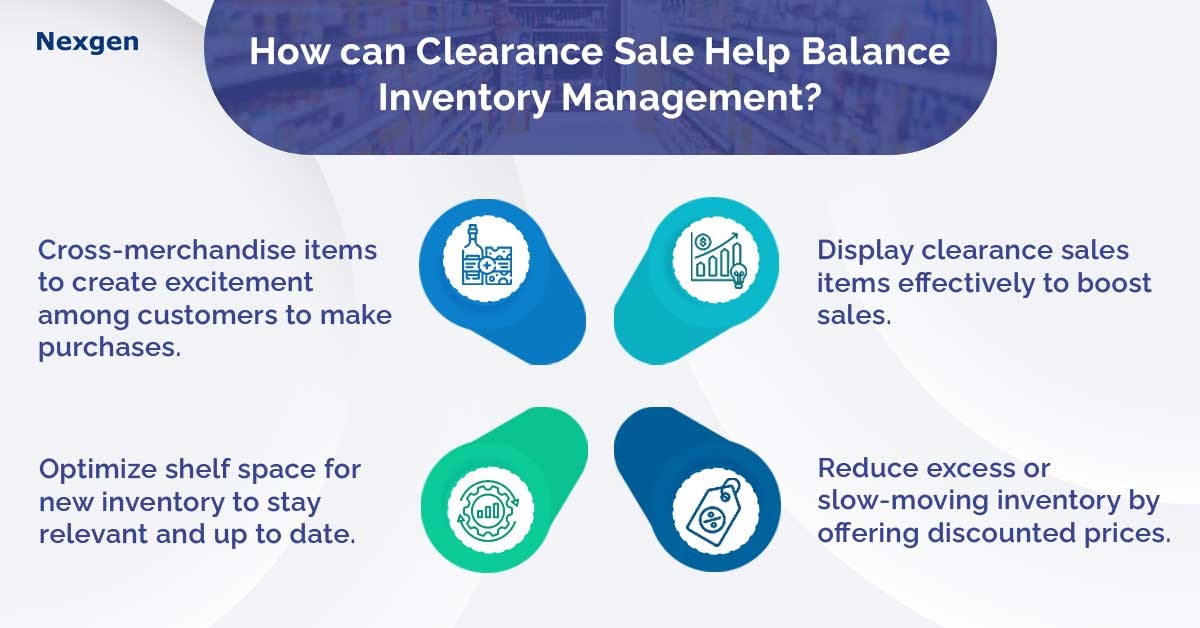Are you keeping unsold merchandise in your store? If your unsold products are accumulating dust on shelves or taking up shelf space, they are not generating profit for your stores. It is time for a clearance sale!
Clearance sales are used as a retail strategy to get rid of excess inventory and appeal to price-conscious shoppers. Since most customers keep a close check on brands sell their products with huge discount and offers, such a sale is a perfect opportunity for you to maintain your current customers while also attracting new ones to your store. How can you plan and execute a clearance sale that improves sales and customer loyalty without hurting your profit or brand image? Shelf planning tools such as planograms are an effective tool for retailers to optimize their inventory, improve cash flow, and create space for new merchandise. This helps retailers balance their inventory level, promotions, shelf space, and price to maintain sales. It ensures optimized sales, reduces costs, and creates a positive shopping experience for your customers. Following are some planogram in retail tips for balancing inventory and offering clearance sales to improve profitability:

- Schedule the right time for sale: Having a clearance sale every quarter, especially during the holiday season, is an excellent idea for getting rid of excess inventory. You must examine the profit of all your products so that you can assess and discover which products are selling slowly and what better price you can provide for the same item at the end of the season. For example, selling jackets at the end of winter at a high discount can encourage shoppers to make purchases. If your products are not highly seasonal, a sale every six months may be sufficient.
- Segment target customers: You need to understand who your target audience is, what their needs and preferences are, and how they respond to several types of promotions. You can segment your customers based on demographics, past sales data, and research. This helps you identify customer patterns, such as which products are slow-moving or which seasons see higher clearance requirements. This data allows you to make more informed decisions about purchasing, pricing, and inventory management strategies in the future. By offering discounted prices, you can draw in customers who may not have considered purchasing from you otherwise. This can help expand your customer base and expose your brand to new individuals. Additionally, satisfied customers who find great deals during clearance sales are more likely to return in the future for regular-priced items, fostering customer loyalty. This helps you customize your clearance sale offers for each customer segment, increasing conversion and retention rates.
- Display clearance sales items effectively: Determine the amount of space required for your clearance sale, considering factors such as the quantity and size of items, customer flow, and available store space. Allocate specific sections or areas within your store where clearance items will be prominently displayed. In general, most customers prefer to window-shop before making a purchasing decision on any product. So, during any sale, make sure that your discounted products are exhibited upfront, directly in front of the shopper's eyes, so that they can browse items. Placing clearance products near the checkout counters is also a great way to entice shoppers and result in impulse purchases. Clearance sales help to make shelf space for new inventory and ensure that your product offerings stay up to date and relevant. This strategy also helps you stay competitive in the market by allowing you to respond quickly to changing trends and consumer demands.
- Price it right: Set discounted prices that are attractive to customers while still allowing you to recover costs and maintain profitability. Using actual pricing rather than percentage-off signs attracts more bargain hunters. For example, try categorizing products by price - a $99 display, a $299 display, or a $399 display. If your products do not sell at 50% off, do not keep them. The primary goal of your store must be to get things out of inventory as quickly as possible. Increase the discount every few days of the clearance to motivate purchasers, such as 30% on the first day, 40% on the third day, and 50% on the seventh day, to entice customers who want to take advantage of the huge discounts.
Overview of Nexgen POG
Nexgen POG is a robust and user-friendly cloud-based visual merchandising tool. It is designed for quick and efficient planogramming with minimal effort. Planogram in retail can be designed by easily dragging and dropping the products. The multi-device compatibility feature of POG allows you to obtain, share and edit planogram on any device, including your phone. It helps in designing store-specific planograms for increased product visibility and sales.
Get Your Free Trial Now!